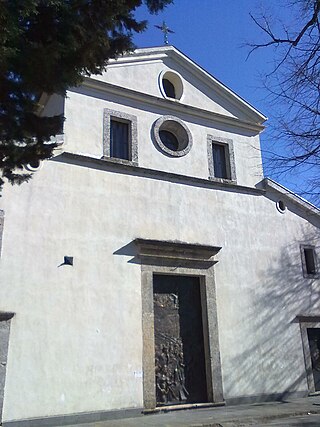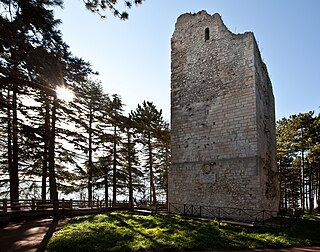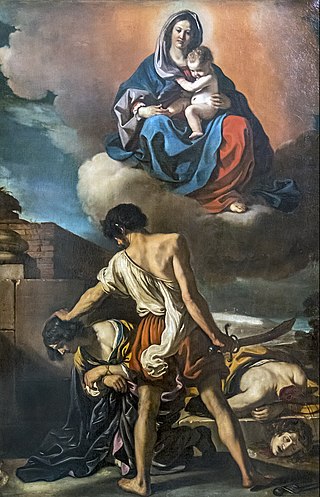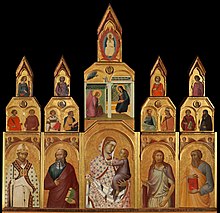
Julian was Roman emperor from 361 to 363, as well as a notable philosopher and author in Greek. His rejection of Christianity, and his promotion of Neoplatonic Hellenism in its place, caused him to be remembered as Julian the Apostate in Christian tradition.
Saint Gavinus is a Christian saint who is greatly celebrated in Sardinia, Italy, as one of the Martyrs of Torres, along with his companions SS Protus, a bishop, and Januarius, a deacon.
The 360s decade ran from January 1, 360, to December 31, 369.
Year 362 (CCCLXII) was a common year starting on Tuesday of the Julian calendar. At the time, it was known as the Year of the Consulship of Mamertinus and Nevitta. The denomination 362 for this year has been used since the early medieval period, when the Anno Domini calendar era became the prevalent method in Europe for naming years.

Saint Lawrence or Laurence was one of the seven deacons of the city of Rome under Pope Sixtus II who were martyred in the persecution of the Christians that the Roman Emperor Valerian ordered in 258.

August 6 - Eastern Orthodox liturgical calendar - August 8

Acerno is a town and comune in the province of Salerno in the region of Campania in south-western Italy.

Guardiagrele is a town and comune in the province of Chieti, part of the Abruzzo region of central Italy. It is in the foothills of the Maiella mountain at an elevation of around 576 metres (1,890 ft). Its population numbers about 10,000.

Artemius or Shalliṭā was a general of the Roman Empire and dux Aegypti or imperial prefect of Roman Egypt. He is considered a saint by the Catholic and the Orthodox Churches, with the name of Artemius of Antioch.

Donatus of Fiesole was an Irish teacher and poet, and Bishop of Fiesole.

John and Paul are saints who lived during the fourth century in the Roman Empire. They were martyred at Rome on 26 June. The year of their martyrdom is uncertain according to their Acts; it occurred under Julian the Apostate (361–3).

The Italian Catholic diocese of Arezzo-Cortona-Sansepolcro has existed since 1986. In that year the historic diocese of Arezzo was combined with the diocese of Cortona and the diocese of Sansepolcro, the enlarged diocese being suffragan of the archdiocese of Florence.
Simplicius, Constantius and Victorinus are venerated as Christian martyrs of the 2nd century. Simplicius, was, according to tradition, a Christian of the Abruzzi region who was executed along with his two sons, Constantius and Victorian, during the reign of Marcus Aurelius. Their Passio contains all of the tropes of the genre. It is believed that the martyrdoms are genuine but that the three martyrs were not necessarily related to one another, but were executed together at Marsica.
San Donato is the Spanish and Italian form of Saint Donatus. It can refer to:

Arezzo Cathedral is a Roman Catholic cathedral in the city of Arezzo in Tuscany, Italy. It is located on the site of a pre-existing Palaeo-Christian church and, perhaps, of the ancient city's acropolis.

Cassius and Castus were two African bishop-martyrs, particularly venerated in Benevento, Calvi, Capua, Sora, Gaeta and other nearby towns in Campania and Lazio. Their feast day is 22 May, shared with Castus and Emilius.
Hilarinus was a martyr who died with Donatus of Arezzo during the persecutions of the Roman Emperor Julian. His feast day is 16 July.

This article lists historical events that occurred between 301–400 in modern-day Lebanon or regarding its people.














